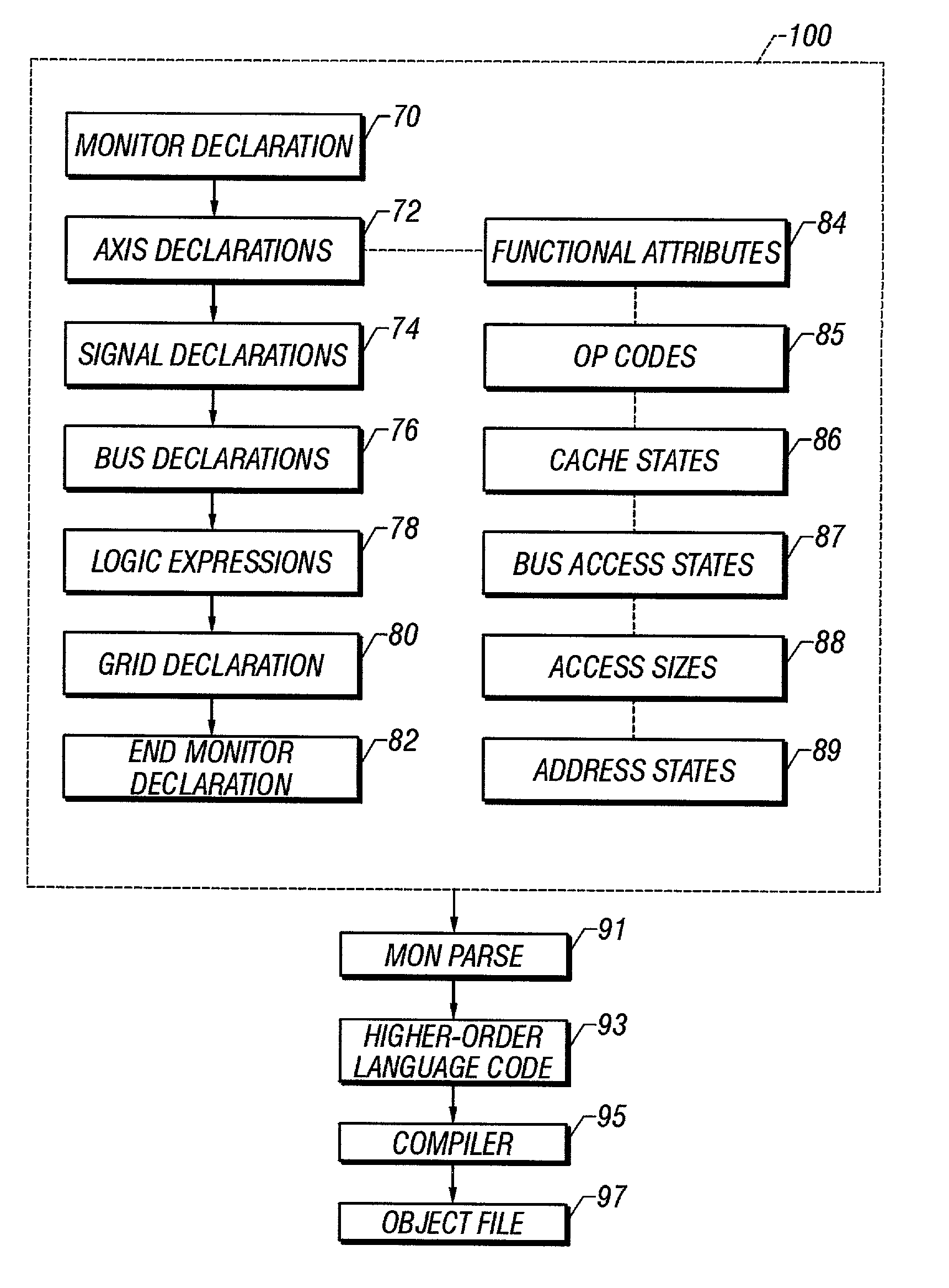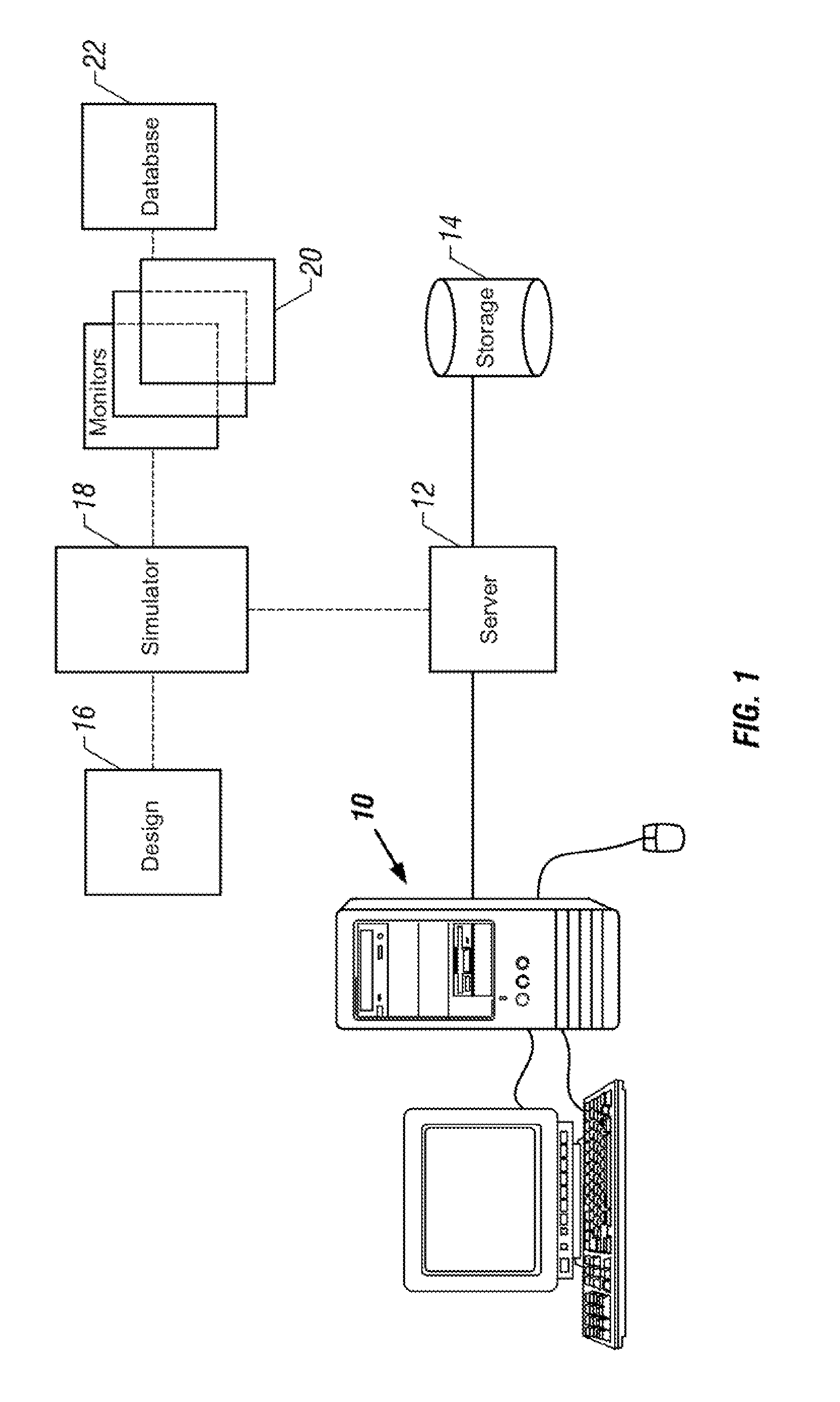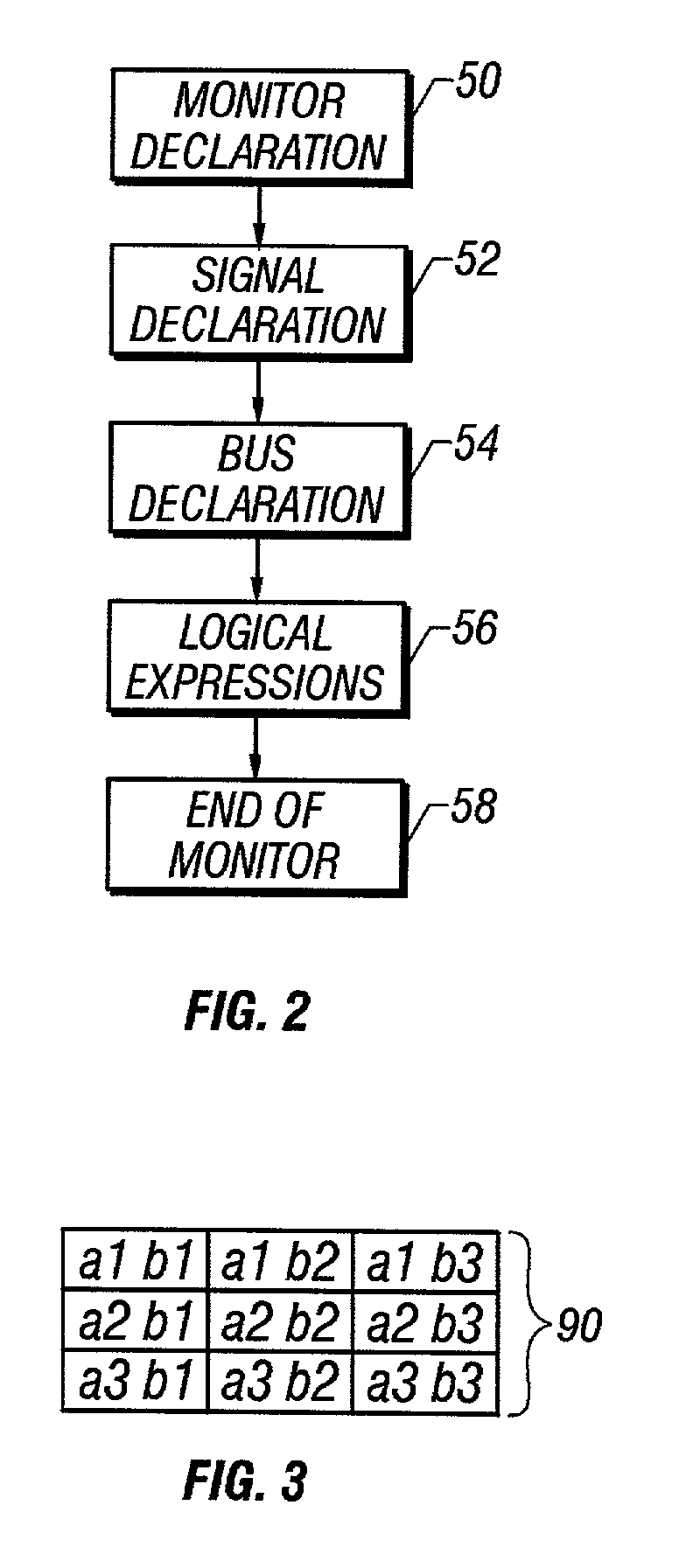Grid that tracks the occurrence of a N-dimensional matrix of combinatorial events in a simulation using a linear index
- Summary
- Abstract
- Description
- Claims
- Application Information
AI Technical Summary
Benefits of technology
Problems solved by technology
Method used
Image
Examples
Embodiment Construction
[0034]The present invention is a method and apparatus that monitors the simulation of a digital design such as a processor, and detects and reports certain events and combinations of events to a database. This disclosure describes numerous specific details that include specific software structures and example instruction streams in order to provide a thorough understanding of the present invention. One skilled in the art will appreciate that one may practice the present invention without these specific details.
[0035]In the embodiment described herein, the present invention is implemented in a monitor language described in detail in the Monitor and Grid Patents. That description is not repeated here, and readers interested in the particulars of the monitor language are encouraged to refer to the Monitor and Grid Patents for the specific information they seek. As described in the Monitor and Grid Patents, the monitor language provides a straightforward method for a user to create a so...
PUM
 Login to View More
Login to View More Abstract
Description
Claims
Application Information
 Login to View More
Login to View More - R&D
- Intellectual Property
- Life Sciences
- Materials
- Tech Scout
- Unparalleled Data Quality
- Higher Quality Content
- 60% Fewer Hallucinations
Browse by: Latest US Patents, China's latest patents, Technical Efficacy Thesaurus, Application Domain, Technology Topic, Popular Technical Reports.
© 2025 PatSnap. All rights reserved.Legal|Privacy policy|Modern Slavery Act Transparency Statement|Sitemap|About US| Contact US: help@patsnap.com



